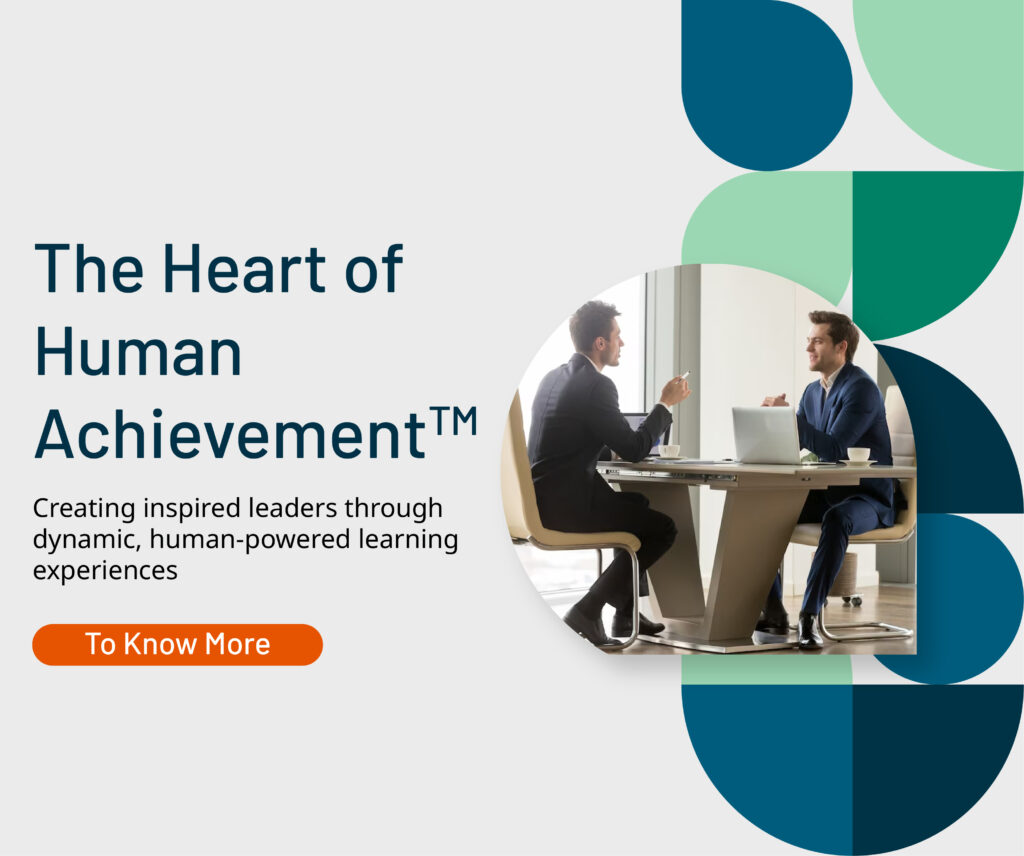Amid today’s high competition, organizations must invest in their most precious resource—their leaders. Leadership is more than a title or the number of people one has to manage. Leadership Development companies are more about developing motivation and direction and ensuring performance delivery. For these reasons, leadership development is now essential for businesses that look forward to retaining their position in any given sector.
At Blanchard India, becoming a good leader requires more than theoretical knowledge. It is about teaching the appropriate attitude, increasing consciousness, and providing individuals with effective practical means for operating in problematic contexts. This blog explains these crucial features and gives valuable recommendations on creating leaders of tomorrow.
What is Leadership Development?
It suggests improving a person’s ability to lead others and provides for growing that capacity through training and education. This process entails providing individuals with decision-making power, experience, and communication capabilities that promote strategic thinking.
At the heart of leadership development logic, it includes self-confidence, competency, compassion for the leader and teams, and the tools to achieve success at organizational levels.
Key Elements of Leadership Development
Outstanding leadership is a process, not an event. True to this notion, at Blanchard India, we firmly believe that anybody can become a good leader with proper and focused coaching. Leadership training is based on several factors that aid a person in progressing to leadership and inspiring others.
- Self-awareness: It has been argued that leadership development is mainly a question of the first degree: self. This consists of self-awareness, understanding of the organization, namely, organizational awareness, and the leader’s personal values, beliefs, and leadership philosophy. When people’s actions reflect their authentic selves, they become better leaders, and this is due to self-awareness.
- Skill Building: This is especially true for leaders; thus, sharpening one’s saw is even more crucial. This warrants the ability to communicate, solve problems, make decisions, and manage teams effectively. These abilities enable leaders to operationalize such conditions and inspire the workers.
- Experience: Leadership experience is the aggregate of leadership activities in any given organization. This could be mentored, observed, and practiced, as well as accepting new posts that give one an appreciation of what leadership entails.
Feedback and growth mean continual improvement.
They make constructive assessments, peer reviews, and reflections to help them learn and further develop themselves.
In Blanchard India, we develop leadership training models that can make people into paragons of influential and strategic leaders.
Why Leadership Development is Critical in Today’s Competitive World
The business world has become exceedingly dynamic; in particular, it has expanded at an unprecedented rate, surpassing the leadership abilities necessary to oversee change. Therefore, it is more critical than ever to consider leadership development, particularly given the need for leaders who can create good leadership practices and inspire new leadership principles in a rapidly changing world. Adopting a hybrid approach to leadership development is essential based on the changing expectations of a cooperative environment.
- Retaining Top Talent – The author asserts that working for an organization that has invested in them will encourage them to stay with it. Training management leadership programs offer the opportunity to develop specific talents, promoting the opportunity for people to be trained and grow in their careers. The result is increased talent retention and a richer, more capable pool of human capital.
- Driving Innovation – A survey revealed that managers who undergo leadership training are better equipped to champion change. With the appropriate tools and perspective, they can effectively develop potential conceptualizations, solve challenging puzzles, offer innovative solutions, and develop novel perspectives. Managers who approach change proactively can create an atmosphere of innovation and implement it.
- Navigating Change – Whether there is a contraction in business or otherwise, effective leadership enables organizations to improve or provide when the business environment changes. The right approach and the correct type of thinking among leaders can help motivate their subordinates, giving them some specific direction during periods of crisis.
- Building a Stronger Workforce – Furthermore, great managers mobilize people, create favorable conditions for performance, and enhance productivity. They foster teamwork, build self-esteem, and help set higher performance levels. These factors are closely related to an organization’s achievement and longevity.
It is important not to see leadership development as a strategy but as an organizational necessity for firms desiring to succeed in an increasingly competitive business environment.
The Core Components of a Leadership Development Program
Organizations will design, elaborate, and integrate leadership development programs to support their objectives. In the following sections, the elements of the core that exist for inclusion are presented:
- Self-Assessment Tools
The initial elements of a program should involve essential individual and team tendencies that provide leaders with clear input on their organizational vulnerabilities and opportunities. 360-degree feedback and personality assessments are among the richest sources. Self Leadership provide valuable insights, blind spots, and development opportunities.
- Training and Workshops
Leadership competencies, including team interaction, dispute resolution, and strategic thinking obtained from workshops, are the basis of development. Leadership and trust ensures that team receives structured learning and practical application.
- Mentorship Opportunities
It helps young talent to grow three times faster when matched with a senior to coach and gives important practical learning insights.
- Practical Work Experiences
Leadership is not an experience that is trained in the classroom. Stretch assignments, cross-functional projects, and other interesting roles are used when teaching the skills in such environments.
- Continuous Learning Resources
For one, members can get access to numerous books, online courses, leadership development coaching, and industry events to help them remain employed and retained.
Blanchard India’s leadership development solutions are modular. They are designed to meet client needs and are quantifiable and sustainable.
The Importance of Developing Strong Leaders
Leadership doesn’t lie in populating managerial roles but creating a leadership culture throughout the organization. Here’s why cultivating great leaders is essential:
- Improved Team Performance
Effective leaders are responsive to the team morale, encourage people, and ensure everyone develops as they should.
- Organizational future-proofing.
Leadership increases the organization’s ability to deal with uncertainty and risk while responding positively to change and opportunity.
- Enhanced Decision-Making
Skilled and experienced leaders seek more informed ways with which they can advance the course of the organization.
- Cultural Impact
The bosses establish the organizational culture throughout the firm by reflecting on its ideals and dictates. Therefore, by cultivating empathetic, ethical, and inclusive leaders in organizations, we can establish the chief characteristics of a healthy workplace.
At Blanchard India, we empower organizations to build a pipeline of strong leaders who can shape the future.
Exploring the 5 Leadership Qualities Essential for Success
Although one may have different leaders throughout life, some generic attributes are crucial to good leadership. Here are the five leadership qualities that every successful leader must possess:
- Emotional Intelligence (EQ)
Emotional intelligence can help leaders manage their emotions, appreciate others’ emotions, and work well with others.
- Vision
The main characteristics of a great leader are that they must have strategies for the future and set up aims and objectives for people to achieve.
- Adaptability
This view is accurate in light of increasing globalization and dynamic programming. Leaders should be open-minded to accommodate various considerations regarding the approach during implementation.
- Resilience
Defeat is unavoidable; everyone must experience failure at some point. A large student capacity compromises the leader’s effectiveness, causes panic, and takes a long time to recover from aggression.
- Communication Skills
Communication is the foundation of leadership. Current society prioritizes leaders with excellent communication skills. Leaders must express what they want to see happen, explain what they see happening, and facilitate discussion.
These five qualities are instilled in our programs at Blanchard India to prepare the leadership for success.
Build Strong Leaders with Blanchard®'s Effective Leadership Development Program

How to Identify Future Leaders in Your Organization
By finding and nurturing talent development, there will always be a push towards the growth of any organization. The best way to recognize these within your team is through these actions:
- Behaviors Under Pressure
In this regard, potential leaders are employees who stay calm and peaceful and strive to find a solution.
- Emotion Self-Monitoring During Communication
Future leaders are known to possess empathy, self-awareness, and strong interpersonal communication skills.
- Look for the initiators.
Workers who demonstrate ownership of their jobs, seek improvement or proactively pursue better ways are actual leadership prospects.
- Measure Communication Skills
The right leader will communicate across any level in an organization.
- Look for team players.
Group-oriented, supportive employees who make their fellow members look good are typically natural leadership candidates.
At Blanchard India, we help organizations find and develop their future leaders by providing tools and frameworks.
Customizing Leadership Development Programs for Organizational Success
Since every organization is unique, a uniform approach to leadership development is insufficient. To achieve high success, the best idea is to tailor programs that favor the firm’s objectives and organizational culture.
Steps to Customize Leadership Development Programs:
- Assess Organizational Needs – Describe the nature of leadership challenges and the opportunities familiar within your organization.
- Define Success Metrics – Identify success factors for individuals within an organization, team members, or corporate factors like higher margins.
- Tailor Content and Delivery – You can select parts of social marketing programs, such as workshops, mentorship, or e-learning, according to your organization’s infrastructure.
- Value Integration – The following process to be included is value integration in the organization for sustainability. Ensure the program promotes your company’s mission, vision, and values.
- Provide Ongoing Support – Leadership development is indeed a lifelong experience. Be connected, provide learning sessions, and follow up with your partners.
At Blanchard India, we create customized leadership development programs that yield real-world results.
Measuring the Success of Leadership Development Initiatives
How will you know if your leadership development program is working? Measuring success is very important in refining and improving your initiatives.
Key Metrics to Track
- Employee Engagement – Where there is active participation, the implication is that the leaders support and encourage the team.
- Retention Rates – However, turnover rates reduce as soon as leadership development improves the workplace climate.
- Performance Measures – Supervise the speed of the teams, the number of projects that have been solved, and so on.
- Leadership Pipeline Development – Monitor the number of employees that are ready to assume a leadership position.
- Feedback Surveys – Collect feedback from participants and their teams to identify strengths and weaknesses.
We at Blanchard India utilize data-driven approaches to measure the effectiveness of leadership development and continually work to improve the process.
Overcoming Common Challenges in Leadership Development
Despite the need for leadership development for these posts, there are challenges. Here are some common issues and how to address them:
- Resistance to Change
Others will be made of rigid stock and may regard new ideas or approaches as unnecessary. To this, it is necessary to outline the advantages of leadership development and the need to maintain the policy of openness.
- Lack of Resources
Challenges include resource constraints, such as limited time or a small amount of money available for work. A solution that simultaneously offers web-based training and consultancy programs for many clients.
- Lack of support from the management
Bryman (2004) pointed out that leadership development programs will demand the backing of executive authorities. Ensure all top officials are actively supported and participate in the program.
- One-Size-Fits-All Approach
Avoid the situation where you just pull a program down from the sky and apply it to your organization and its managers.
Conclusion
Building better leaders is not as simple as learning to anticipate the future; it is creating a better organization for the present. Learning and focusing on top talent will help organizations build a strong leadership culture for growth and innovation.
At Blanchard India, we love what we do—building strong leadership pipelines for organizations by offering programs and solutions that work, not gimmicks. Our work is not limited to creating the next generation of leaders or advancing the skills of senior managers; we are right there with you.
Want to create the leaders of tomorrow? Call Blanchard India now and begin your leadership development journey!
FAQs
Leadership development refers to enhancing personal, technical, and operational abilities through training, tutoring, and practical exposure to enable individuals to lead groups and organizations. Ideally, leadership development is the addition of an individual’s skills, competence, and abilities to be prepared to lead an organization or a team.
Leadership effectiveness is required to create great leaders who are effective at creating positive change, motivating their subordinates, and ultimately creating sustainable structural success. In addition, the perception is helpful for organizations seeking to maintain workers and outlooks on how organizations can be ready for it.
Promising components include self-checking instruments, skill-development training, focused coaching, and seasoning assignments; experiences in leadership positions or managerial practice; and training applications for ongoing learning and development.
These programs construct empathy and efficient leaders who support teams interacting, motivating, and encouraging one another, improving teamwork morale.
Emotional intelligence, vision, adaptability, resilience, and practical communication skills are the five leadership qualities necessary for success.
This can help the organization to note the potential for the development of employee champions through a direct assessment based on observation of employees who demonstrate these behaviors: People mapping can be used in the identification of future leaders based on observing those employees who exhibit:
It can be defined by the number of employees’ attendance and satisfaction, team performance, increased leadership talents, and beneficiaries’ feedback, both from participants individually and from the participants’ teams.
Customizations entail programs that reflect the organization’s missions, vision, and values, writing content that references specific leadership positions, and providing scenarios related to the organization’s field of operation.
Such issues may include a lack of top management support, an organizational culture that resists change, sufficient endowment, and implementation issues because there is no one-size-fits-all solution. The above problems can be solved through effective communication, improved executive support, and the development of new precise programs.
Blanchard India develops tailored, custom-made leadership development programs that build leadership competence, are aligned with business objectives, and provide measurable business results.









